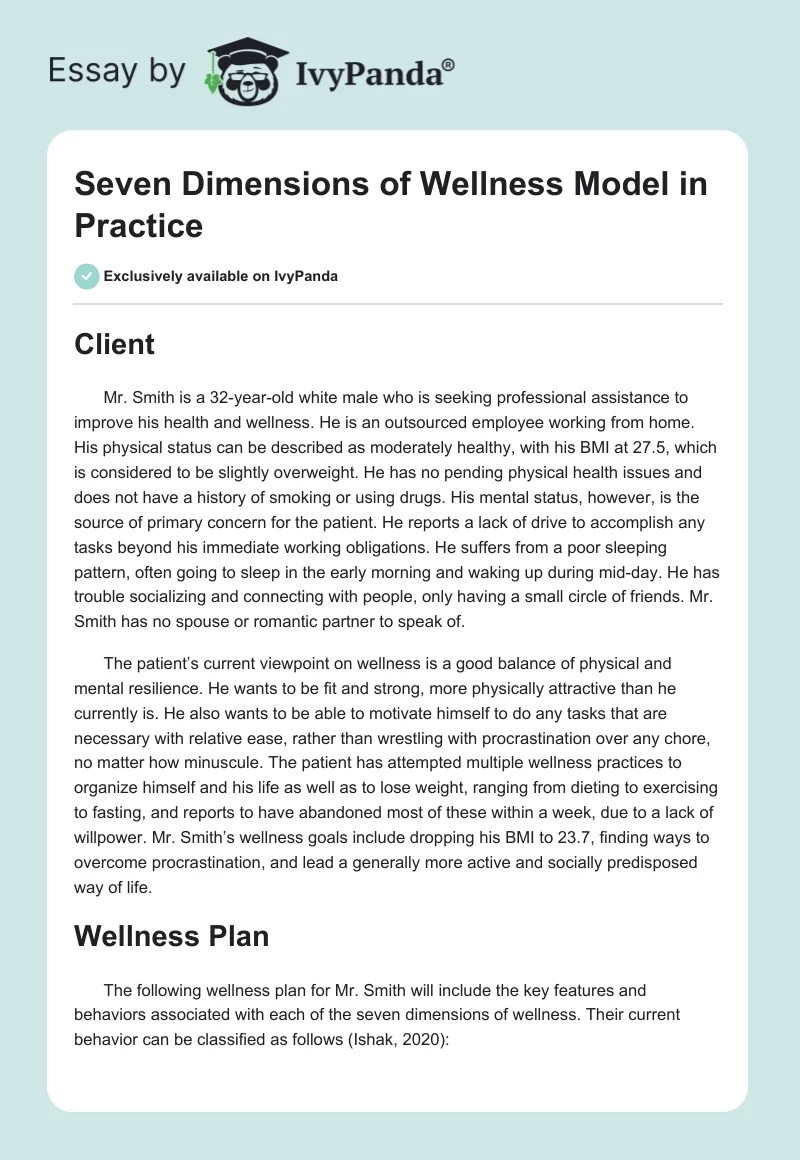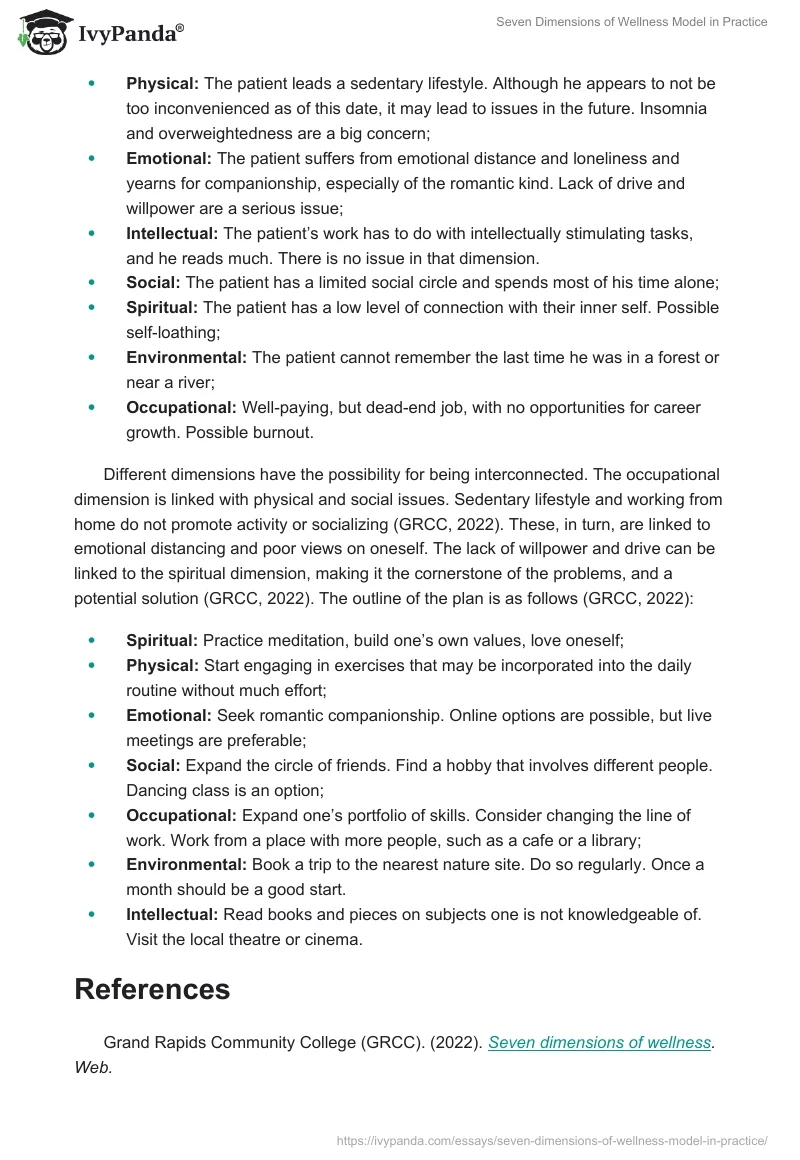Client
Mr. Smith is a 32-year-old white male who is seeking professional assistance to improve his health and wellness. He is an outsourced employee working from home. His physical status can be described as moderately healthy, with his BMI at 27.5, which is considered to be slightly overweight. He has no pending physical health issues and does not have a history of smoking or using drugs. His mental status, however, is the source of primary concern for the patient. He reports a lack of drive to accomplish any tasks beyond his immediate working obligations. He suffers from a poor sleeping pattern, often going to sleep in the early morning and waking up during mid-day. He has trouble socializing and connecting with people, only having a small circle of friends. Mr. Smith has no spouse or romantic partner to speak of.
The patient’s current viewpoint on wellness is a good balance of physical and mental resilience. He wants to be fit and strong, more physically attractive than he currently is. He also wants to be able to motivate himself to do any tasks that are necessary with relative ease, rather than wrestling with procrastination over any chore, no matter how minuscule. The patient has attempted multiple wellness practices to organize himself and his life as well as to lose weight, ranging from dieting to exercising to fasting, and reports to have abandoned most of these within a week, due to a lack of willpower. Mr. Smith’s wellness goals include dropping his BMI to 23.7, finding ways to overcome procrastination, and lead a generally more active and socially predisposed way of life.
Wellness Plan
The following wellness plan for Mr. Smith will include the key features and behaviors associated with each of the seven dimensions of wellness. Their current behavior can be classified as follows (Ishak, 2020):
- Physical: The patient leads a sedentary lifestyle. Although he appears to not be too inconvenienced as of this date, it may lead to issues in the future. Insomnia and overweightedness are a big concern;
- Emotional: The patient suffers from emotional distance and loneliness and yearns for companionship, especially of the romantic kind. Lack of drive and willpower are a serious issue;
- Intellectual: The patient’s work has to do with intellectually stimulating tasks, and he reads much. There is no issue in that dimension.
- Social: The patient has a limited social circle and spends most of his time alone;
- Spiritual: The patient has a low level of connection with their inner self. Possible self-loathing;
- Environmental: The patient cannot remember the last time he was in a forest or near a river;
- Occupational: Well-paying, but dead-end job, with no opportunities for career growth. Possible burnout.
Different dimensions have the possibility for being interconnected. The occupational dimension is linked with physical and social issues. Sedentary lifestyle and working from home do not promote activity or socializing (GRCC, 2022). These, in turn, are linked to emotional distancing and poor views on oneself. The lack of willpower and drive can be linked to the spiritual dimension, making it the cornerstone of the problems, and a potential solution (GRCC, 2022). The outline of the plan is as follows (GRCC, 2022):
- Spiritual: Practice meditation, build one’s own values, love oneself;
- Physical: Start engaging in exercises that may be incorporated into the daily routine without much effort;
- Emotional: Seek romantic companionship. Online options are possible, but live meetings are preferable;
- Social: Expand the circle of friends. Find a hobby that involves different people. Dancing class is an option;
- Occupational: Expand one’s portfolio of skills. Consider changing the line of work. Work from a place with more people, such as a cafe or a library;
- Environmental: Book a trip to the nearest nature site. Do so regularly. Once a month should be a good start.
- Intellectual: Read books and pieces on subjects one is not knowledgeable of. Visit the local theatre or cinema.
References
Grand Rapids Community College (GRCC). (2022). Seven dimensions of wellness. Web.
Ishak, W. W. (Ed.). (2020). The handbook of wellness medicine. Cambridge University Press.


